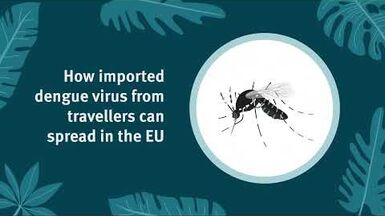The importance of analyses of antigenic match and monitoring influenza vaccine effectivenessArchived
Influenza viruses pose a particular challenge for those designing vaccines for humans. Much of the protective immunity that humans have against these viruses following natural infection or vaccination is due to immunological recognition of the haemagglutinin (HA) surface glycoprotein.
The HA changes continuously hence great care is taken to match the antigens in the current trivalent vaccines [A(H1N1), A(H3N2) and a B virus] with the most prominent currently circulating human viruses. Â To inform the selection of vaccine antigens national influenza reference laboratories (WHO National Influenza Centres: NICs) conduct year round influenza surveillance. They report to the World Health Organization (WHO), to provide continuous monitoring of the virology and epidemiology of influenza viruses in humans [1].
This complex virological surveillance network, the WHO Global Influenza Surveillance and Response System, was initially established more than 60 years ago. The WHO Collaborating Centres for human Influenza play a key role; following receipt of virus isolates/clinical specimens from NICs, WHO Collaborating Centres undertake detailed antigenic and genetic analyses of circulating influenza viruses to monitor the current mix of viruses, particularly looking for significant numbers of newly evolved antigenic variants of the influenza A (H3N2 and H1N1) and B viruses that fall within distinct phylogenetic groups, to provide an integrated assessment of the characteristics of circulating viruses.
Twice yearly, the data and analyses are collectively reviewed by the Collaborating Centre scientists, WHO staff and other investigators (largely NIC representatives) to make recommendations on which virus strains should be used in influenza vaccines for the coming influenza season [2]. The review-meetings take place in February and September, focussing on viruses in the influenza seasons for Northern and Southern hemisphere temperate countries, respectively. These meetings are timed to afford the vaccine manufacturers a lead time of about six months for the timely delivery of the vaccine to countries, e.g. in September for the Northern Hemisphere. For the Northern Hemisphere, if influenza transmission does not pick up until January, a period of very intense collection and forwarding of clinical specimens for analysis at NICs will occur, who in turn, will forward a representative selection of specimens to a WHO CC for detailed analysis. Within Europe, the WHO CC is located in London, UK and this Centre is also part of the Community Network of Reference Laboratories: with ECDC, it produces and publishes summaries of influenza virus characterisation in Europe at regular intervals.
Particular emphasis is placed on the ability (titre) of animal sera raised against the current vaccine viruses to prevent agglutination of red blood cells, haemagglutination, by a standardised amount of an influenza virus. This is backed up by sequence analyses, notably of the HA gene, to produce phylogenetic analyses through which the appearance of new virus strains can be mapped and described, e.g. in the latest ECDC influenza virus characterisation report. A high haemagglutination titre, similar to that seen following vaccination, is indicative of a good vaccine match while titres that are lower by 8-fold or greater are considered low reactors. Significant numbers of low reactors falling within a particular phylogenetic group will signal the need for a change in recommendation of the vaccine virus as the circulating viruses would have evolved to such an extent that immunity induced by the current vaccine virus would not be expected to protect against them.
In the past decade an additional approach has been the development of studies of observed field vaccine effectiveness in preventing infection and disease. Initially vaccination efficacy (optimal effectiveness under controlled conditions) is determined through randomised placebo-controlled trials in healthy subjects. These trials cannot be undertaken each year as they are expensive but, more importantly, after trials demonstrated good efficacy most people would consider subsequent trials to be unethical, particularly among the most vulnerable 'risk' groups, such as older people. Because of virus variation and the variation in the magnitude of epidemics the observed effectiveness is more variable and less than the assessed vaccine efficacy [3]. Since it is the effectiveness that people experience, these estimates are of interest and importance to both those vaccinating and the vaccinees and to policy makers. Measurements are made using a range of epidemiological methodologies but especially case-control and cohort studies, always with end-points of laboratory confirmed infections [4-7]. As these are not randomised trials bias is difficult to exclude, so particular care must be undertaken to minimise bias and to allow for effects of confounding variables [6, 8]. With modest investment it has been demonstrated that these studies can be coordinated across multiple sites in North America, Europe and Australasia producing initial results in season by the time of the February meetings and then going on to scientific publications [9-14]. Additional information for the Northern Hemisphere come from vaccine effectiveness studies in the Southern Hemisphere in its preceding season and vice versa [16-18].
The dual approaches of virus characterisation and estimates of vaccine effectiveness complement each other and their results should be looked at in combination. Since the current vaccines might not be always perfect [4, 5] the field effectiveness studies, if carefully undertaken, can provide a level of realistic assessment of the virological work. The studies can also be reassuring in that antigenic changes have been observed occasionally without a noticeable fall in field effectiveness as happened in the 2007-8 season in the USA [9]. However, more often than not, antigenic changes detected by the antigenic characterisation combined with virus gene sequencing, are predictive of declines in vaccine effectiveness and must not be ignored. One consequence of the dynamic nature of influenza is that observed virological changes, especially early in the season when the number of viruses analysed is limited, should not be over-interpreted [9]. Thus, it is important to wait for the integrated assessment of broader, global data made at the WHO review-meetings in February and September before predictions of vaccine matches should be produced. Even then it is observed vaccine effectiveness estimates that provide the best information for policy makers and clinicians and increasingly those can now be produced in season even if the time to publication in peer review journals is delayed.






